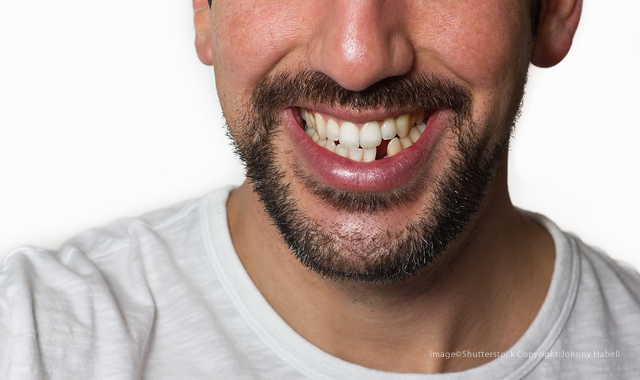Will humans one day be able to regrow teeth?
New research takes a closer look at bioengineered tooth restoration.

No matter how careful you are with your teeth, accidents are bound to happen. Whether you lost a permanent tooth due to a sports injury or poor dietary habits, replacing the missing tooth with a dental implant is probably your best option. But what if you were able to regrow your missing tooth?
Researchers at Okayama University in Japan recently studied successful tooth regeneration in a postnatal large mammal. They first tested whether bioengineered tooth germ led to the formation of a proper tooth. To do this, they dissected embryonic tooth germ cells and tissues of a beagle dog 55 days prior to birth. Then, they reconstructed bioengineered tooth germ with a technique known as the organ germ method, a 3D cell manipulation technique. Several weeks after the germs were transplanted into mice, the researchers discovered tooth-crown formation featuring both the hard and soft tissues present in natural teeth.
To take things one step further, the researchers conducted autologous transplantation experiments. Rather than using a donor, these experiments used the dog’s own stem cells, which helps to avoid immunological rejection. The researchers extracted deciduous teeth from the jawbone of a 30-day-old beagle dog. Tooth germ engineered from the dog’s permanent tooth cell and tissue was transplanted into the dog’s mandible, which resulted in tooth eruption 180 days later.
According to the study, micro-CT analysis showed that the developmental process of the bioengineered tooth’s formation was practically identical to that of a natural tooth. In addition, the bioengineered tooth was found to have the same structure and chemical composition of a natural one.
“This study represents a substantial advancement in organ replacement therapy through the transplantation of bioengineered organ germ as a practical model for future whole-organ regeneration,” the study states. “Whole-tooth replacement therapy holds great promise for the replacement of lost teeth by reconstructing a fully functional bioengineered tooth using three-dimensional cell manipulation in vitro.”
This isn’t the first time that tooth regeneration in humans has been studied. In 2015, researchers at Georgia Institute of Technology and King’s College in London studied hundreds of Lake Malawi cichlids, small fish that are native to Tanzania. The researchers discovered that, with the right stimulation, human epithelial tissue might be manipulated into regenerating new teeth.
The researchers at Okayama University noted that immature wisdom tooth germ may be considered a potential candidate for reconstruction of bioengineered tooth germ. However, there are some limitations. For instance, elderly patients do not have developing tooth germ that could be used for this process. Autologous transplantation of tooth germ is also limited by the number of available teeth and the size of a given type of tooth. They concluded that additional evidence and testing will be required for the medical application of this process.
The study, titled "Practical whole-tooth restoration utilizing autologous bioengineered tooth germ transplantation in a postnatal canine model," appeared in Scientific Reports.
University of Texas Health Science Center San Antonio to Launch Center for Regenerative Sciences
June 17th 2024The center aims to translate preclinical discoveries into therapies for dental and craniofacial diseases, leveraging the school’s expertise in stem cell-based treatments and 3D printing technologies.